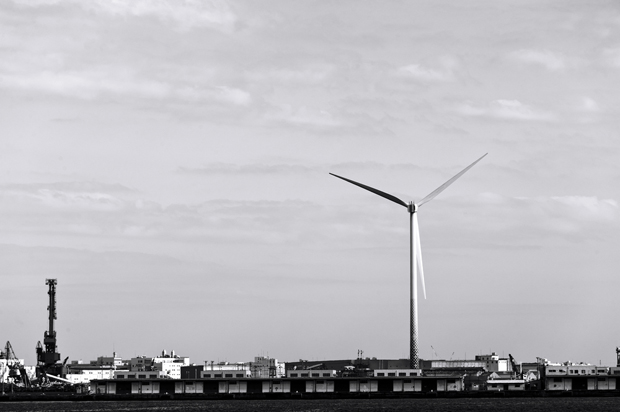After Fukushima, will a new feed in tarriff solve Japan's energy issues?

As Japan now has only one reactor left running, it is reaching record dependencies on fossil fuels. Over the past 10 years, roughly 85% of Japan’s energy was generated from coal, oil and natural gas. This ratio has now temporarily expanded to 93% due to the loss of nuclear power.
Unlike the US, however, Japan has almost no domestic sources of fossil fuels to speak of, so that it is forced to import 98% of these resources. This has led to Japan’s balance of trade turning negative for the first time since 1980. After three decades of exports exceeding imports, Japan’s increased imports of fossil fuels are limiting Japan’s future growth prospects.
Anti-nuclear sentiment has exploded after the nuclear disaster at Fukushima, so that a restart of all of Japan’s nuclear reactors is also becoming increasingly unlikely. The question of how this gap in generating capacity will be filled thus depends mainly on one piece of outstanding policy: Japan’s new Feed-in Tariff to promote renewable energy, expected in early July 2012.
The enactment of the policy has already been approved by the upper chamber. However, its most important element is still being debated: The exact price of the feed-in tariff. While provisions such as guaranteed grid-access and long-term contracts for electricity produced are common elements in feed-in tariffs around the world, the purchase prices which are currently being proposed by businesses and industry associations are surprisingly high.
Industry representatives from Softbank, Mitsubishi and Mitsui are trying to push through their preferred price for solar PV. On April 23rd the commission in charge of calculating the tariff has recommended a price of 42 Yen (52¢). In comparison, the tariff in Germany is now at 0,18 Euro (24¢) for residential solar and 0,13 Euro (17¢) for larger scale utilities.
Industry proposals for wind power currently lie around 21-24 Yen / kWh (26 – 30¢). In Germany, while onshore wind fetches around 0,09 Euro (12¢). While current legislation as well as conditions related to transmission and distribution render electricity generation somewhat more expensive in Japan than in Germany, tariff prices as mentioned above constitute strong opportunities for expansion of renewable energy. At these rates, wind energy industry insiders in Japan predict profit spans anywhere between 51% to over 100%, depending on location. Unforeseen issues, such as a lack of independent inspection and certification for renewable utilities are, however, making it surprisingly difficult to determine a fair price.
Investors are waiting for the final word on all of Japan’s feed-in tariffs, likely due by the end of this month, leading to a large number of projects currently still being on hold. Similar to the solar industry, producers of wind turbines have suffered from production over-capacities, mainly due to policy changes in Europe and pressure from Chinese makers. World wind turbine production in 2011 has outstripped demand, leading to strong downward pressure on the price of wind turbines.
However, while Chinese manufacturers are increasingly dominating the solar PV market, this cannot be said of the wind turbine market. There are huge issues, both with the quality of wind turbines and with their deployment and grid connection. Over half of all wind turbines in China are currently not producing electricity.
Japan has, in the past, mostly placed its hopes on the expansion of nuclear power, leading to a comparatively low utilization of renewables (3% of primary energy in 2011). A change in this priority will most likely be reflected in this year’s outstanding legislation.
These factors constitute a significant opportunity especially for Danish, German and American manufacturers, since Japan imports 80% of its wind turbines. A surge in new wind projects would not only lead to increased demand for turbines, but also for expertise in maintenance, deployment and grid management.
In the implementation of a feed-in tariff, however, Japan has to be careful not to repeat Germany’s mistakes. There, a relatively high price level for solar power has led to such a rapid expansion that Chancellor Merkel was forced to abruptly reduce solar tariffs by 30%. Resulting drops in demand for solar PV models are part of the reason why leading German companies such as Q-Cells, Solar Millenium and Solon have recently filed for bankruptcy. Recently, worries about the negative impacts of such policy caused boom-bust cycles are increasing.
Overly stimulating demand for comparatively expensive solar power is a fundamental danger and the backlash that an overly rapid expansion can have on electricity prices should not be underestimated. This is especially important as Japan already has by far the highest residential electricity prices in Asia at an average of 22.6 Yen / kWh (28¢).
While a rapid expansion of renewable energies in Japan is already beginning, the exact extent and further acceleration of growth largely depend on the remaining feed-in tariffs and related policy. One thing is clear however: By the end of July, the outlook on the future of Japan’s energy market will be far less clouded.
You can return to the main Market News page, or press the Back button on your browser.

